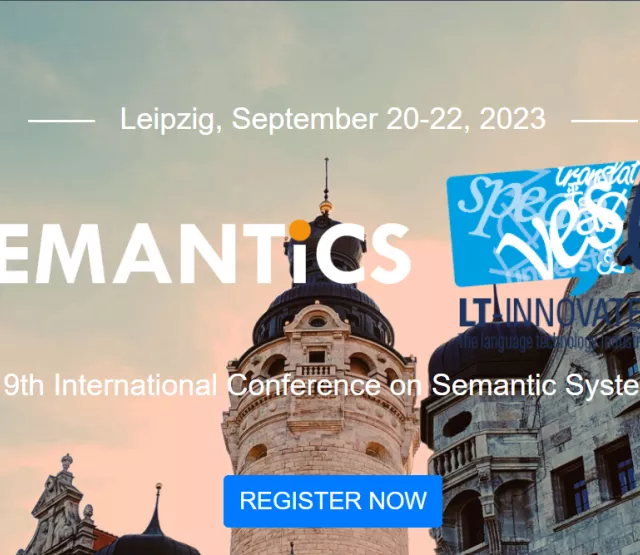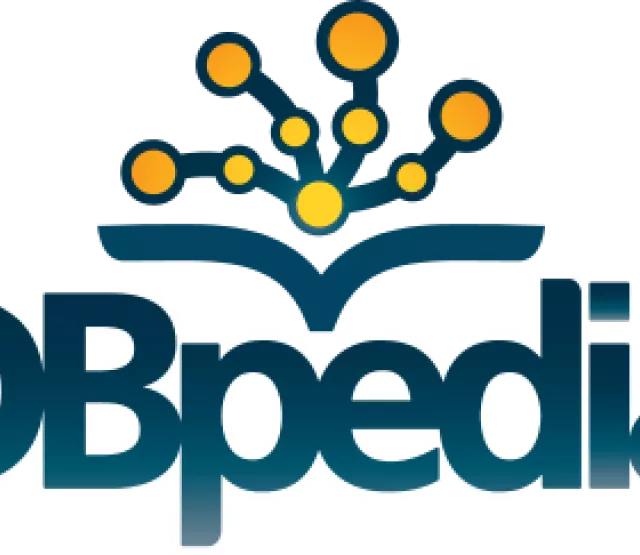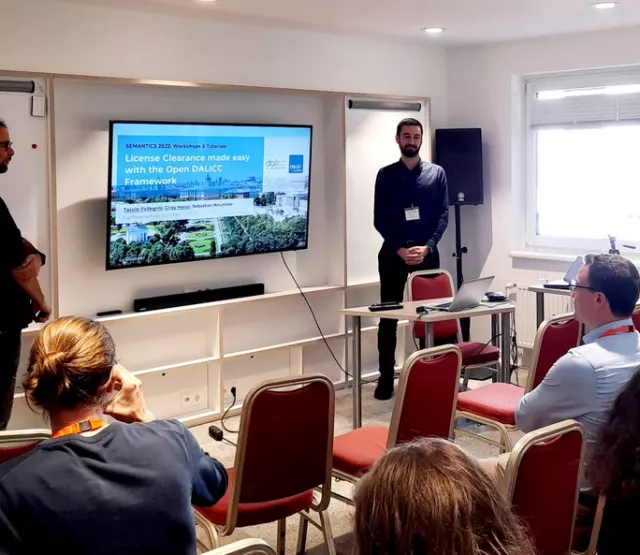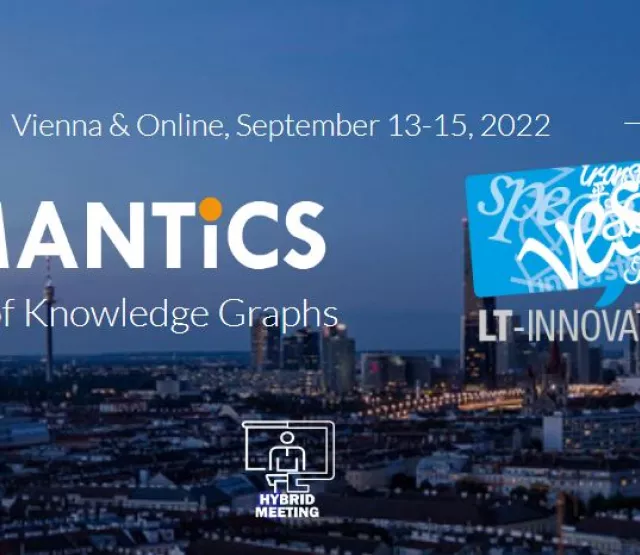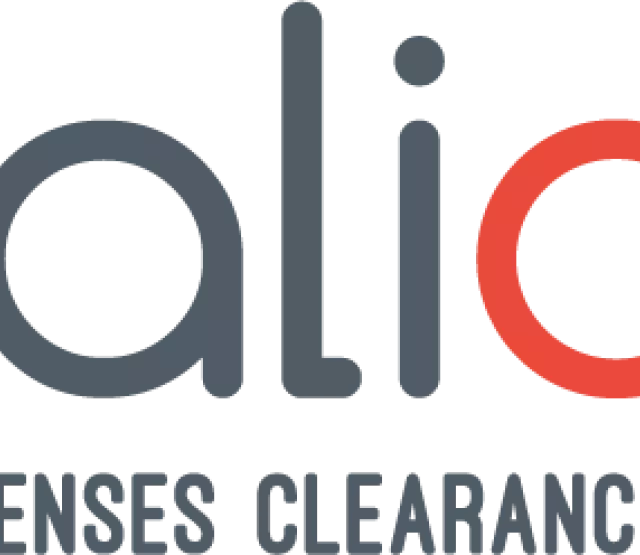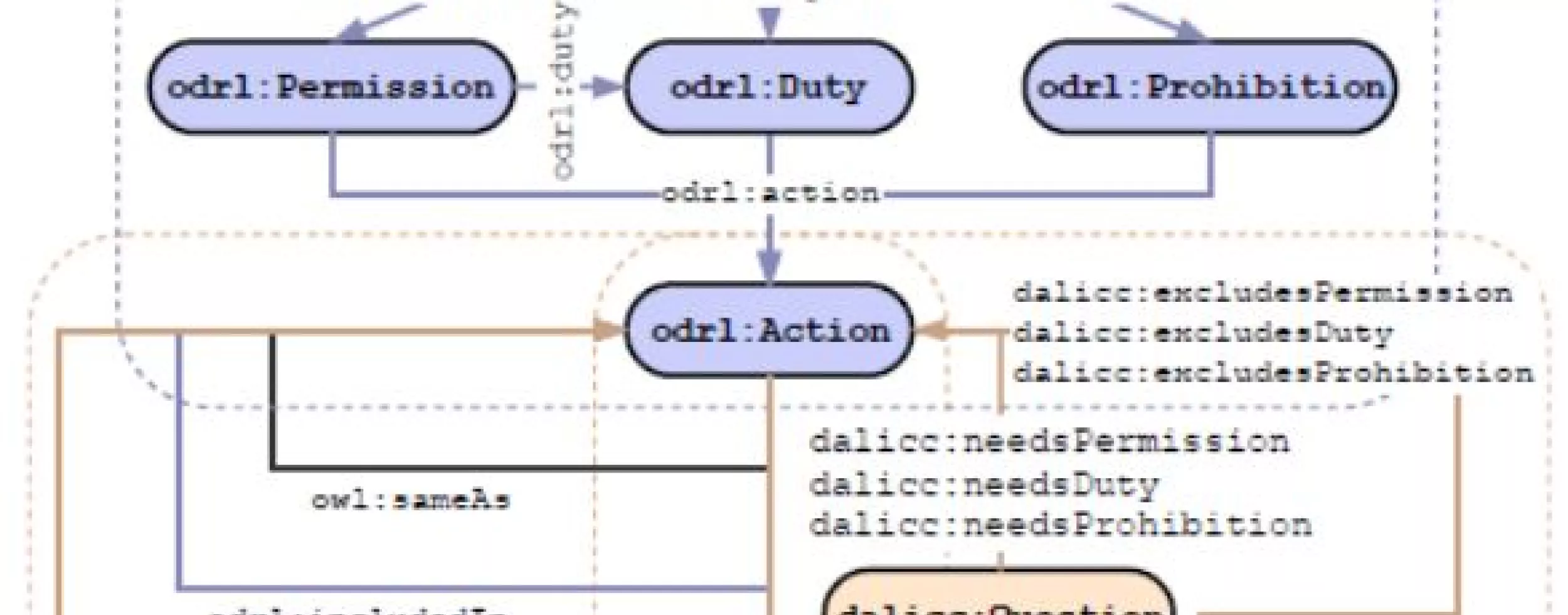
Förderjahr 2021 / Projekt Call #16 / ProjektID: 5763 / Projekt: DALICC
Making data machine-readable means to apply an information meodel that defines the legitimate dependencies between concepts. In this post we give a a brief glimpse how we do that.
In order to represent license concepts in a structured machine-readable format we chose the ODRL policy expression language, which includes a flexible and interoperable information model and an extendable vocabulary. The ODRL information model is particularly suitable for modeling licenses in the form of policies that express permissions, prohibitions and duties related to the usage of assets. ODRL also defines a vocabulary of general terms (e.g., odrl:reproduce, odrl:distribute, odrl:modify) and can be further extended with terms from other vocabularies such as CC REL (e.g., cc:CommercialUse, cc:DerivativeWorks).
To express legally valid machinereadable representations of licenses, it was necessary to create additional terms (e.g., dalicc:perpetual as a validity type, dalicc:worldwide as a jurisdictional property, dalicc:chargeLicenseFee as permission and prohibition actions, and dalicc:modificationNotice as a duty action), which we called the DALICC vocabulary extension. A full documentation of our vacabulary is available here.
The figure below depicts the central role of odrl:Action in integrating the licenses, dependency graph and questionnaire.
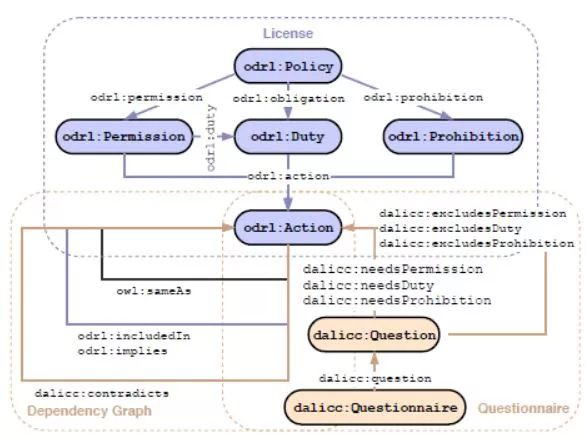
For mapping from license components to vocabulary terms, we considered both provenance information and rules. Provenance information is descriptive information about an asset such as creator (dct:title), licensor (dct:publisher), title (dct:title) etc. as well as information applicable to the license, such as its validity period (e.g. dalicc:validityType or dalicc:perpetual) or the region specification (e.g. cc:jurisdiction or dalicc:worldwide). To represent the main asset targets we used the Dublin Core vocabulary, which covers concepts such as: software, dataset, sound, text, image and moving image. The rule concept in turn represents common licensing conditions divided into three categories: permissions, duties (i.e., obligations), and prohibitions. As a result of the previous steps we can generalize a set of properties, which are used for representing legally valid licenses in a machine-readable way and suitable for reasoning and comparison with other licenses. This model can be applied for adding arbitrary new license to the RDF license library.
Tassilo Pellegrini



